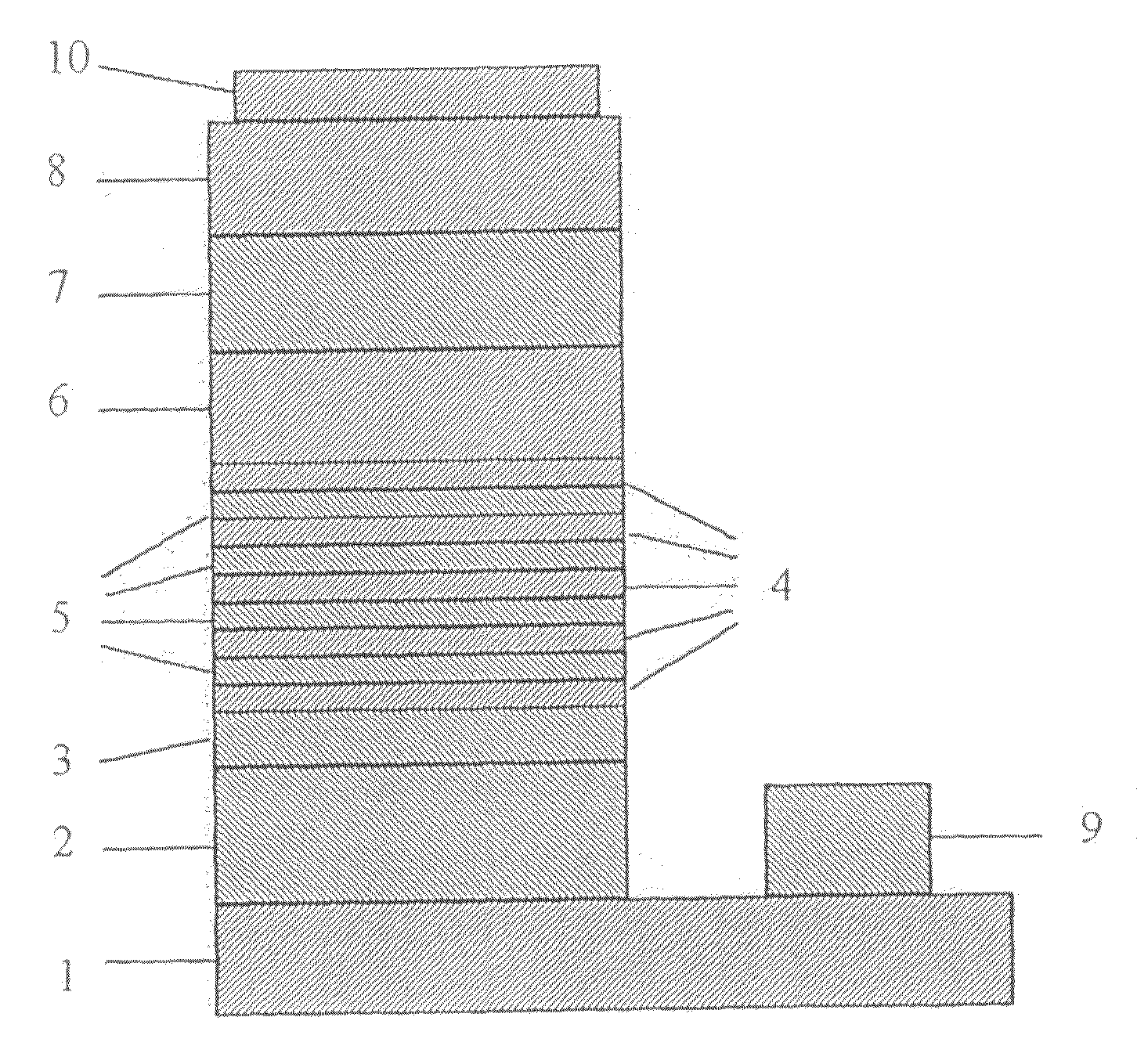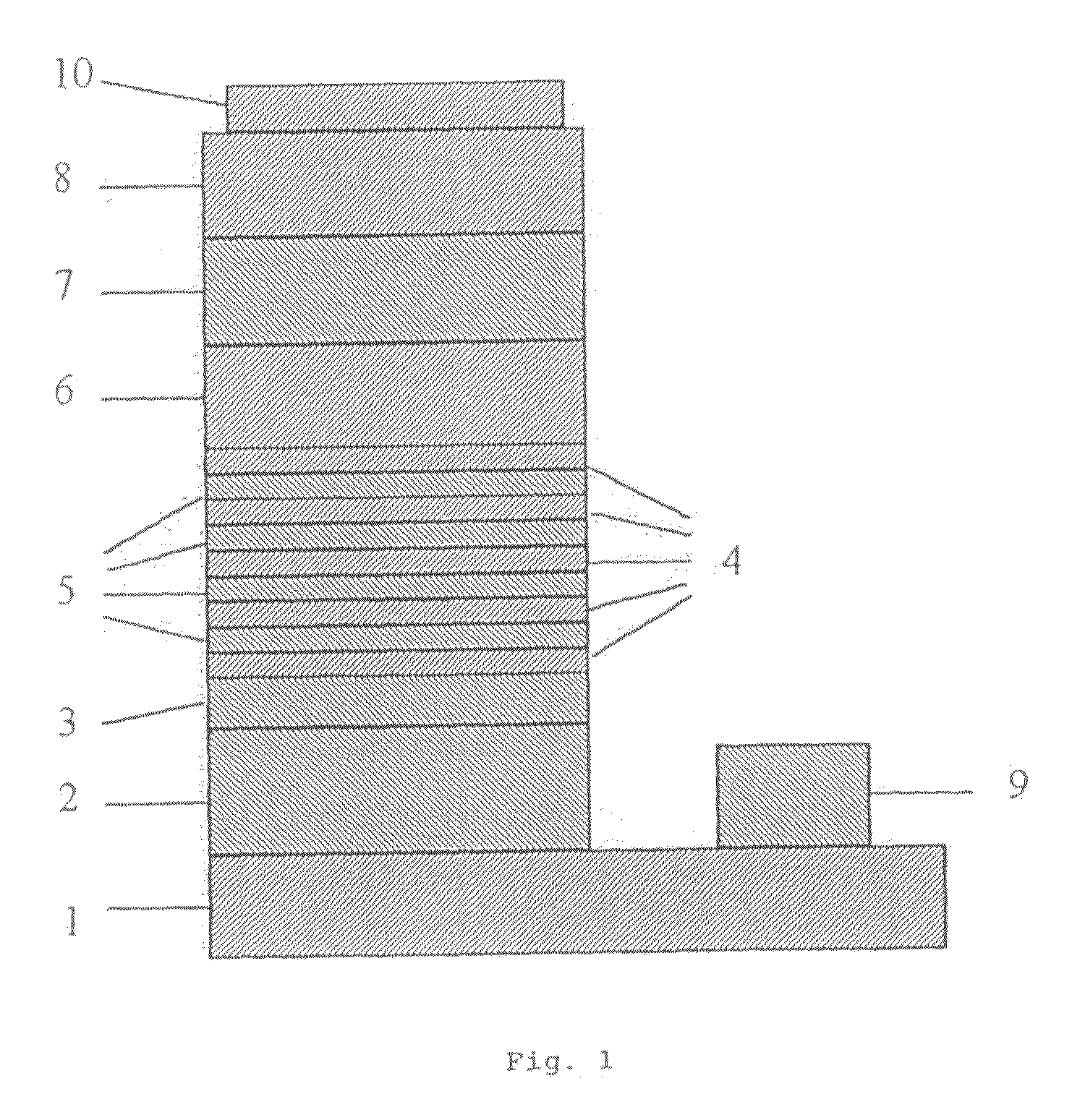Group lll-V compound semiconductor and a method for producing the same
a compound semiconductor and semiconductor technology, applied in semiconductor devices, nanooptics, electrical apparatus, etc., can solve the problems of significant brightness degradation, unproduced crystals sufficiently satisfying high quality, and unsatisfactory brightness of light-emitting devices disclosed in these documents, and achieve high brightness
- Summary
- Abstract
- Description
- Claims
- Application Information
AI Technical Summary
Benefits of technology
Problems solved by technology
Method used
Image
Examples
example 1
[0082]The low-temperature-grown GaN buffer layer was grown on C-face sapphire at 490° C. supplying TMG and ammonia as the raw materials and hydrogen as the carrier gas.
[0083]After TMG supply being once ceased, the temperature was raised up to 1090° C. and then TMG, ammonia and silane as the raw materials and hydrogen as the carrier gas were supplied to grow an n-type GaN layer having a thickness of 3 μm, followed by supply of silane being ceased to grow an undoped GaN layer having a thickness of 300 nm. After ceasing supply of TMG and silane and then being cooled down to 785° C., TEG and ammonia as the raw materials and nitrogen as the carrier gas were supplied to grow a GaN layer having a thickness of 100 nm, and then followed by repeating the procedure 5 times, the procedure that TEG, TMI and ammonia as the raw materials and nitrogen as the carrier gas were supplied under the pressure of 50 kPa to grow a InGaN layer having a thickness of 3 nm and a GaN layer having a thickness of ...
example 2
[0089]An LED was obtained by the same operation as in Example 1 except the thickness of the p-type GaN layer changed to 450 nm. The LED was estimated under the same conditions as that of Example 1. The results are shown in Table 1.
example 3
[0090]An LED was obtained by the same operation as in Example 1 except the thickness of the p-type GaN layer changed to 300 nm. The LED was estimated under the same conditions as that of Example 1. The results are shown in Table 1.
Reference 1
[0091]An LED was obtained by the same operation as in Example 1 except the thickness of the p-type GaN layer changed to 150 nm. The LED was estimated under the same conditions as that of Example 1. The results are shown in Table 2.
PUM
 Login to View More
Login to View More Abstract
Description
Claims
Application Information
 Login to View More
Login to View More - R&D
- Intellectual Property
- Life Sciences
- Materials
- Tech Scout
- Unparalleled Data Quality
- Higher Quality Content
- 60% Fewer Hallucinations
Browse by: Latest US Patents, China's latest patents, Technical Efficacy Thesaurus, Application Domain, Technology Topic, Popular Technical Reports.
© 2025 PatSnap. All rights reserved.Legal|Privacy policy|Modern Slavery Act Transparency Statement|Sitemap|About US| Contact US: help@patsnap.com


